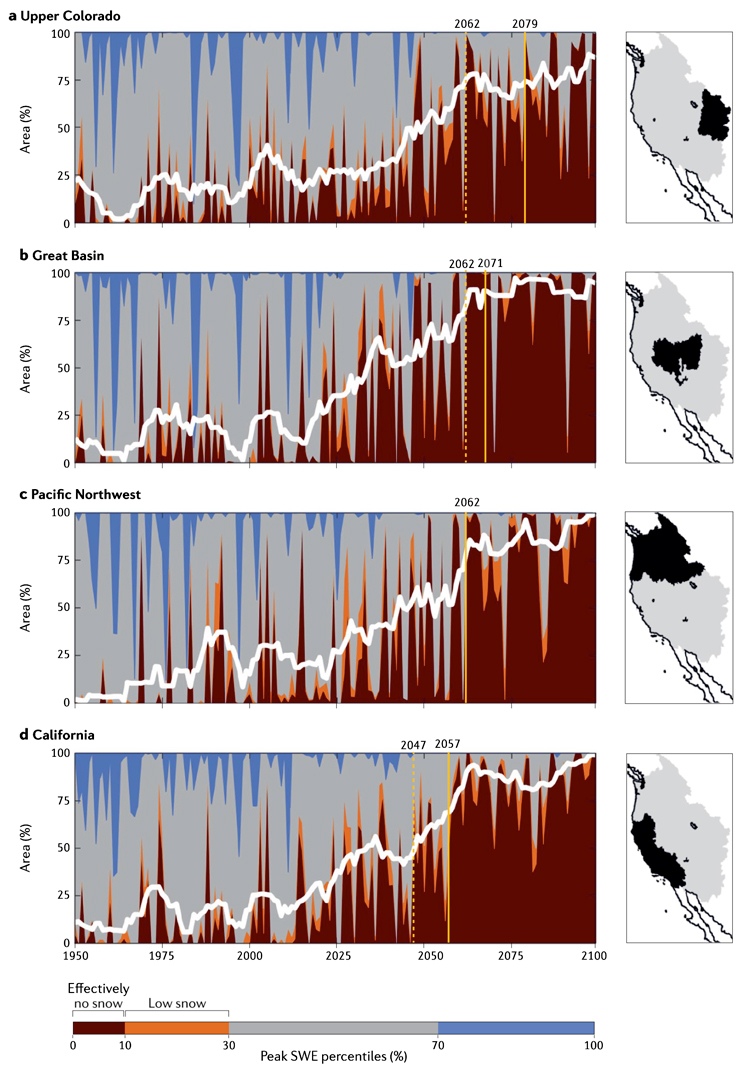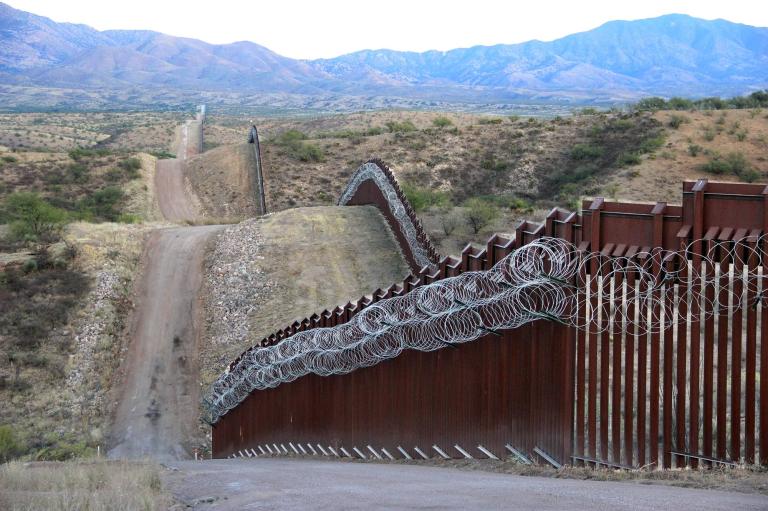This story was originally published by High Country News and is reproduced here as part of the Climate Desk collaboration.
Across the Central Rockies, it’s been an unseasonably warm, dry year. Denver smashed the record for its latest first measurable winter snow. Colorado ski resorts delayed opening because temperatures were too high to even produce fake snow. And Salt Lake City was entirely snowless through November, for only the second time since 1976.
These snowless scenarios, while still an exception, are set to become much more common as early as 2040, according to a paper published in Nature Reviews Earth and Environment. Drawing from years of snowpack observations, the researchers project that in 35 to 60 years, the Mountain West will be nearly snowless for years at a time if worldwide greenhouse gas emissions are not rapidly reduced. This could impact everything from wildfires to drinking water.
The purpose of the study was twofold. First, researchers wanted to highlight the extent of snow loss in the last several decades, and in those to come. “This is not an issue in a hypothetical future,” said Erica Siirila-Woodburn, a research scientist at the Lawrence Berkeley National Laboratory and one of the study’s lead authors. The Mountain West has already lost 20 percent of its snowpack since the 1950s and could lose another 50 percent by the end of the century. Another key objective, said Siirila-Woodburn, was to provide more accurate and usable information to water managers and policymakers who need precise information on how much time they have to prepare for a future with much less snow.
To do that, the researchers created models that classify the degree of snow loss across four mountain regions. For example, in April 2015, the Sierra Nevada’s peak snowpack was only 5 percent of normal, something the researchers describe as an “extreme” event. And while extreme events will continue to happen with greater frequency, what will also start to become common are “episodic low-to-no snow” events, when at least half of a mountain basin experiences low-to-no snow for five consecutive years. That could happen as early as 2047 in the Sierra Nevada. Persistent snow loss, defined as when at least half of such an area experiences low-to-no snow for 10 consecutive years, could begin in California in the late 2050s, in the Pacific Northwest in the early 2060s, and in the Upper Colorado by the late 2070s.

The effects will extend far beyond just shuttered ski resorts. The study points out that the declining snowpack is already contributing to another growing problem in the West: extreme wildfires. Lack of snow after wildfires could make it much harder for forests to recover. “Snow matters after the fire in terms of facilitating or fostering the revegetation of the area,” said Anne Nolin, a snow hydrologist and professor at the University of Nevada, Reno, who has studied the connection between snow and post-wildfire forest recovery. (Nolin was not involved with the paper.) And with more precipitation falling as rain instead of snow, this could permanently alter the kind of vegetation that grows back, as well as the structure of the soils, which can lead to issues like erosion. “This all has cascading impacts,” Nolin said.
But perhaps the biggest impact will be on water supply. About 75 percent of the water used in the Western U.S. comes from snowmelt. The Colorado River, for example, is fed by mountain snow and supplies drinking water for more than 40 million people. Western rivers also generate electricity and provide irrigation for millions of acres of farmland. “Every state in the West that is dry or uses Colorado River water is being impacted,” said Nolin. That includes Lake Mead, which is fed by the Colorado. Nolin recently flew over the reservoir and was shocked by how low it was. Water lines on the rock, staining the rocks white, were visible several feet above the actual water surface.
Other dry areas, like California’s San Joaquin Valley, are already facing a water crisis brought about by drought and shrinking aquifers. With the snowpack receding, drought lingering, and the groundwater getting sucked up by agriculture, several communities have already lost all access to their drinking water.
Less snow will have significant implications for climate and water justice in these areas. “The folks who lose their water first are the lowest-income communities in the state and are often overwhelmingly communities of color,” said Camille Pannu, founding director of the Water Justice Clinic at UC Davis and co-director of the Community and Economic Development Clinic at UC Irvine. “Climate change is a major factor and perhaps one of the most existential factors right now when it comes to water access.”
The authors offered potential solutions in the paper, suggesting ways that water managers can adapt to a drier future and increasingly critical water supply issues, such as by using weather and hydrologic forecasts to selectively release or store water for flood control, or purposefully recharging groundwater and aquifers for water storage. “The main point is to try to be proactive about all of this, rather than reactive,” said Alan Rhoades, a hydroclimate research scientist at Berkeley Lab and one of the paper’s lead authors.
Paul Brooks, a hydrologist at the University of Utah who was not involved in the paper, said that the changing snow patterns are one of the greatest threats we face from climate change. “The next few decades need to be ‘all hands on deck’ with partnerships between researchers, managers, and policymakers to address these challenges.”




